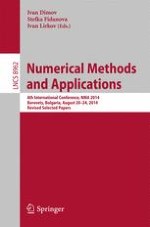This book constitutes the thoroughly refereed post-conference proceedings of the 8th International Conference on Numerical Methods and Applications, NMA 2014, held in Borovets, Bulgaria, in August 2014. The 34 revised full papers presented were carefully reviewed and selected from 56 submissions for inclusion in this book. The papers are organized in the following topical sections: Monte Carlo and quasi-Monte Carlo methods; metaheuristics for optimization problems; advanced numerical methods for scientific computing; advanced numerical techniques for PDEs and applications; solving large engineering and scientific problems with advanced mathematical models; numerical simulations and back analysis in civil and mechanical engineering.
